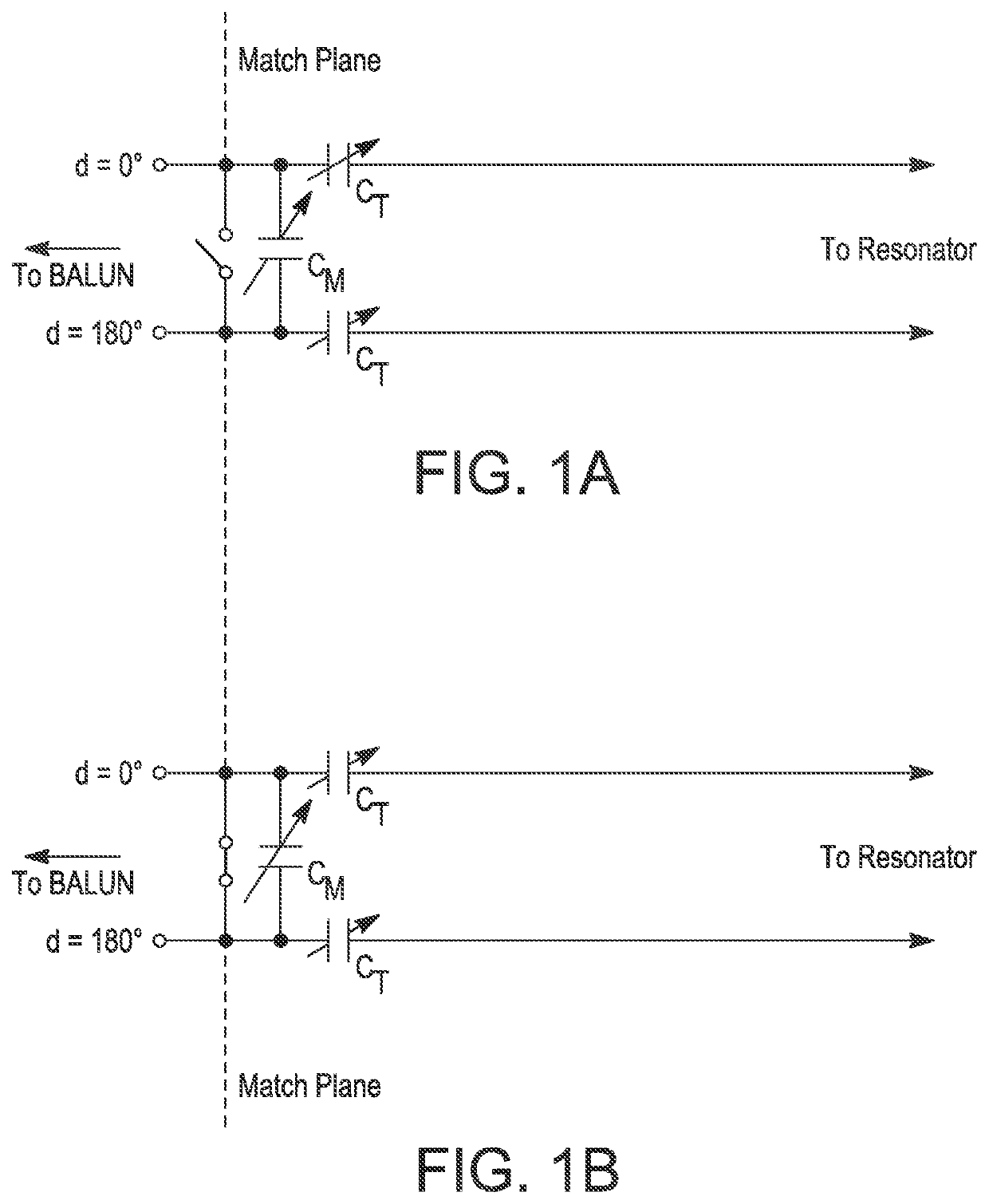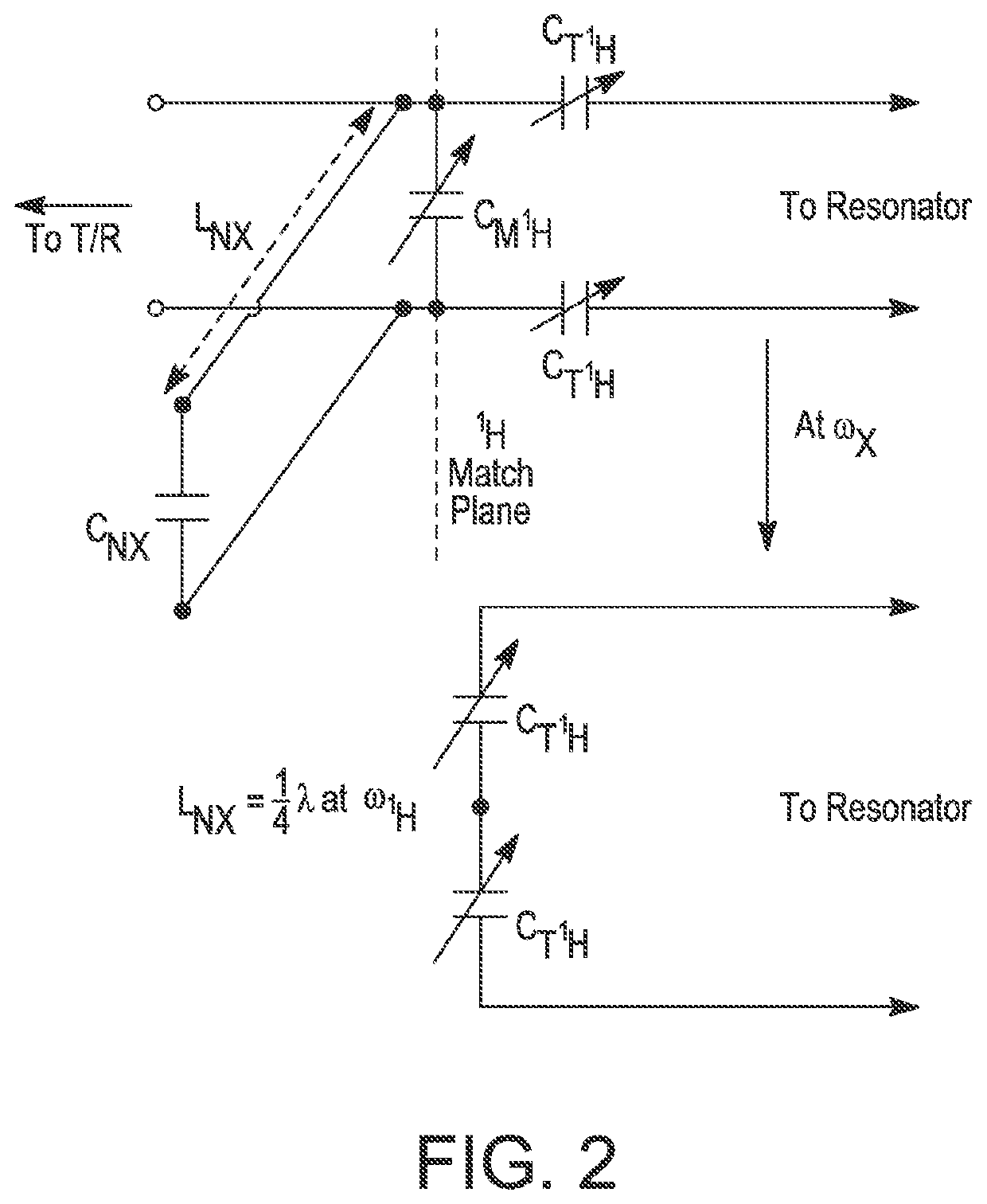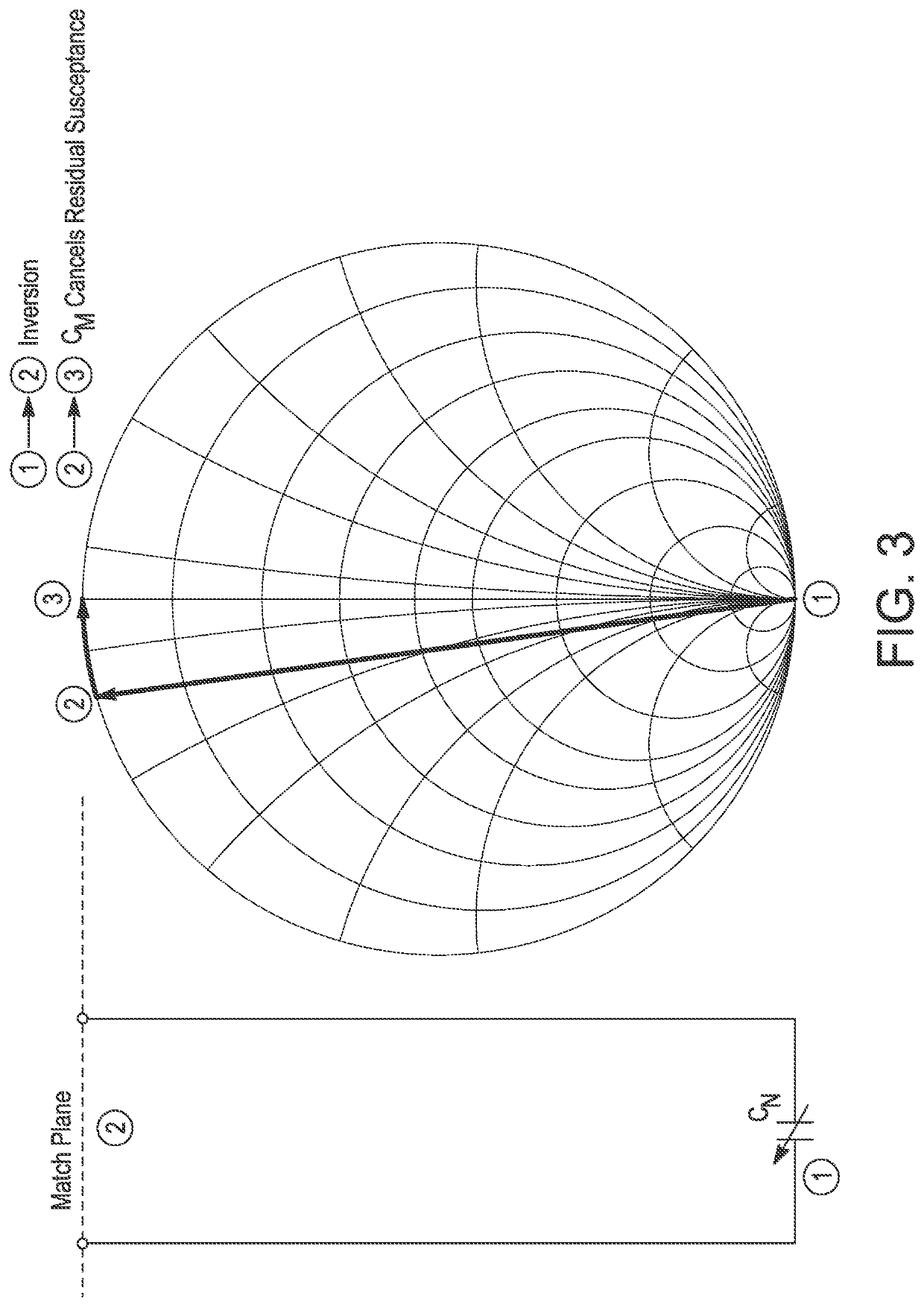Augmented tune/match circuits for high performance dual nuclear transmission line resonators
a dual nuclear transmission line and resonance technology, applied in the field of high-performance dual nuclear transmission line resonance resonance augmented tune/match circuits, can solve the problems of low efficiency, bsub>1 /sub>field uniformity, and the inability to rigorously quantify the efficiency of dual nuclear transmission lines, and achieve high efficiency
- Summary
- Abstract
- Description
- Claims
- Application Information
AI Technical Summary
Benefits of technology
Problems solved by technology
Method used
Image
Examples
exemplary example 1
[0069]Summary:
[0070]In this non-limiting example, a dual nuclear transmission line resonator design according to the disclosure which may be applied to both surface coils and volume coils is presented. The active elements of the resonator are resonant on both 1H and X. No wave trap is used in the active elements, which are essentially “clean” transmission line elements. Efficiency is very high on both 1H and X, and port-to-port isolation is excellent. In this example, a small 1H / 13C surface coil is described.
[0071]Methods:
[0072]A single loop transmission line resonator was constructed from copper clad Rexolite 1422. The loop was designed for 4.7T. This loop is essentially a “swelling” in a balanced transmission line, with an inner diameter of 2 cm. Termination elements were fabricated from equal lengths of HF-290 coaxial line, with ends terminated by variable piston capacitors. The piston capacitors were meshed to give resonance in the middle of the loop on both 1H and 13C. Balanced...
exemplary example 2
[0081]Method:
[0082]The dual nuclear transmission line resonator of Exemplary Example 1 was also used for Exemplary Example 2.
[0083]Results:
[0084]Unloaded Q was measured for both 1H and 13C by measuring the derivative of the S11 curve on either side of resonance. Q was 245 for 1H and 196 for 13C. Next, the coil was loaded with a 13C urea phantom. After shimming on 1H, the 13C spectrum in FIG. 12 was obtained. Using the same 13C urea phantom, isolation measurements under load were made. These are shown in FIGS. 13 and 14. 1H isolation from the 13C port was −37 dB, and 13C isolation from the 1H port was −62 dB. FIG. 15 shows 13C spectra of natural abundance ethanol: on the left, the 1H decoupler was off; in the center, 1H decoupler was on; and on the right, NOE enhanced decoupling. No retuning or repositioning was required for the acquisition of these spectra. At all times, both the 1H coil and the 13C coil tuned and matched smoothly, with no “cross talk” between the two. In operation,...
PUM
 Login to View More
Login to View More Abstract
Description
Claims
Application Information
 Login to View More
Login to View More - R&D
- Intellectual Property
- Life Sciences
- Materials
- Tech Scout
- Unparalleled Data Quality
- Higher Quality Content
- 60% Fewer Hallucinations
Browse by: Latest US Patents, China's latest patents, Technical Efficacy Thesaurus, Application Domain, Technology Topic, Popular Technical Reports.
© 2025 PatSnap. All rights reserved.Legal|Privacy policy|Modern Slavery Act Transparency Statement|Sitemap|About US| Contact US: help@patsnap.com



